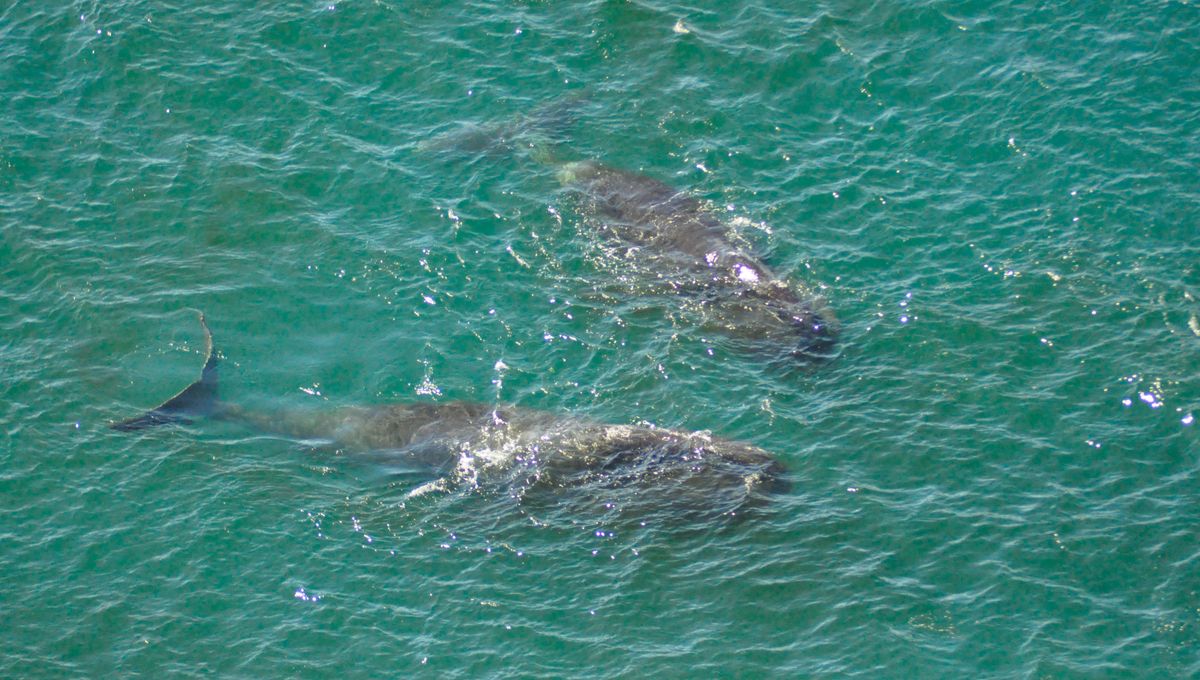
The bowhead whale is the world’s longest-living mammal, sometimes making it to a staggering 200 years old. How does it do it? A new study sheds some light on the secrets of this curious cetacean’s extreme longevity – and it could have ramifications for how we tackle aging in our own species too.
As well as its outrageous lifespan, the bowhead whale (Balaena mysticetus) also boasts an impressive size. Weighing over 80,000 kilograms (176,400 pounds), it is the second-largest animal on Earth. In theory, such large-bodied, long-lived animals should be at greater risk of developing cancer. Their bodies contain more cells and therefore will undergo more cell divisions over their elongated lifespan, each of which has the potential to introduce mutations. However, this just doesn’t hold true: cancer incidence doesn’t correlate with body size, an incongruity known as Peto’s paradox.
The researchers of the new paper decided to investigate this contradiction in the bowhead whale, speculating that it “must possess uniquely potent genetic mechanisms to prevent cancer and other age-related diseases”. As things stand, they add, research on such mechanisms of aging in the species is scarce.
“Everybody knows the bowhead whale is extremely long lived, but nobody knew why,” Zhiyong Mao, a molecular biologist at Tongji University in Shanghai, China, who was not involved in the study, told Nature News.
But that may have just changed, as the team, led by scientists at the University of Rochester, identified a cold-activated protein that helps to repair broken DNA. It’s called CIRBP and was found at much higher levels in bowhead whales than in any other mammal.
As an endangered species, the whales are especially difficult to study, meaning the researchers had to rely on tissue samples gathered by the Alaskan Iñupiat Inuit, who are permitted to hunt the species in honor of a long-standing cultural tradition.
From these samples, the team grew whale cells back in the laboratory, which, they found, were better at repairing damaged DNA and had lower rates of mutation than the human cells they compared them to.
They noted several DNA repair proteins that were more abundant in bowhead whales than in other mammalian species, which may explain this, but CIRBP in particular caught their attention.
“CIRBP stood out because it was present at 100-fold higher levels,” Vera Gorbunova, study author and biology professor at the University of Rochester, said in a statement.
The protein plays a key role in repairing double-strand breaks – where the phosphate backbone of both DNA strands is broken, which can drive cancer development – and is activated in cold conditions, such as the icy ocean habitat where bowheads live.
“If we just lower the temperature a few degrees, cells make more CIRBP protein,” Professor Andrei Seluanov, co-author of the research, explained.
Crucially, CIRBP is present in humans, which means this breakthrough in our understanding of bowhead whale longevity could potentially be used to help our own species live longer.
In fact, when the team expressed the whale protein in human cells, their ability to repair DNA improved. Plus, when they expressed it in fruit flies (Drosophila), it extended their lifespan.
“By studying the only warm-blooded mammal that outlives humans, our work provides information about the mechanisms that allow such extended lifespans, underscoring the importance of genome maintenance for longevity,” Gorbunova added.
As for how we could achieve this in humans, Gorbunova has some suggestions: “Both boosting the body’s existing CIRBP activity or introducing more of the protein may work,” she said. “Lifestyle changes – things like taking cold showers – might contribute too and might be worth exploring.”
Much more research into CIRPB needs to be undertaken before we can understand whether this is the case, but it’s an exciting prospect that we may one day be able to enhance DNA repair, bolster cancer resistance, and slow the effects of aging, all thanks to a very old, and very large, whale.
The study is published in Nature.
Source Link: Bowhead Whales Can Live For 200 Years – This May Explain Their Extraordinary Longevity